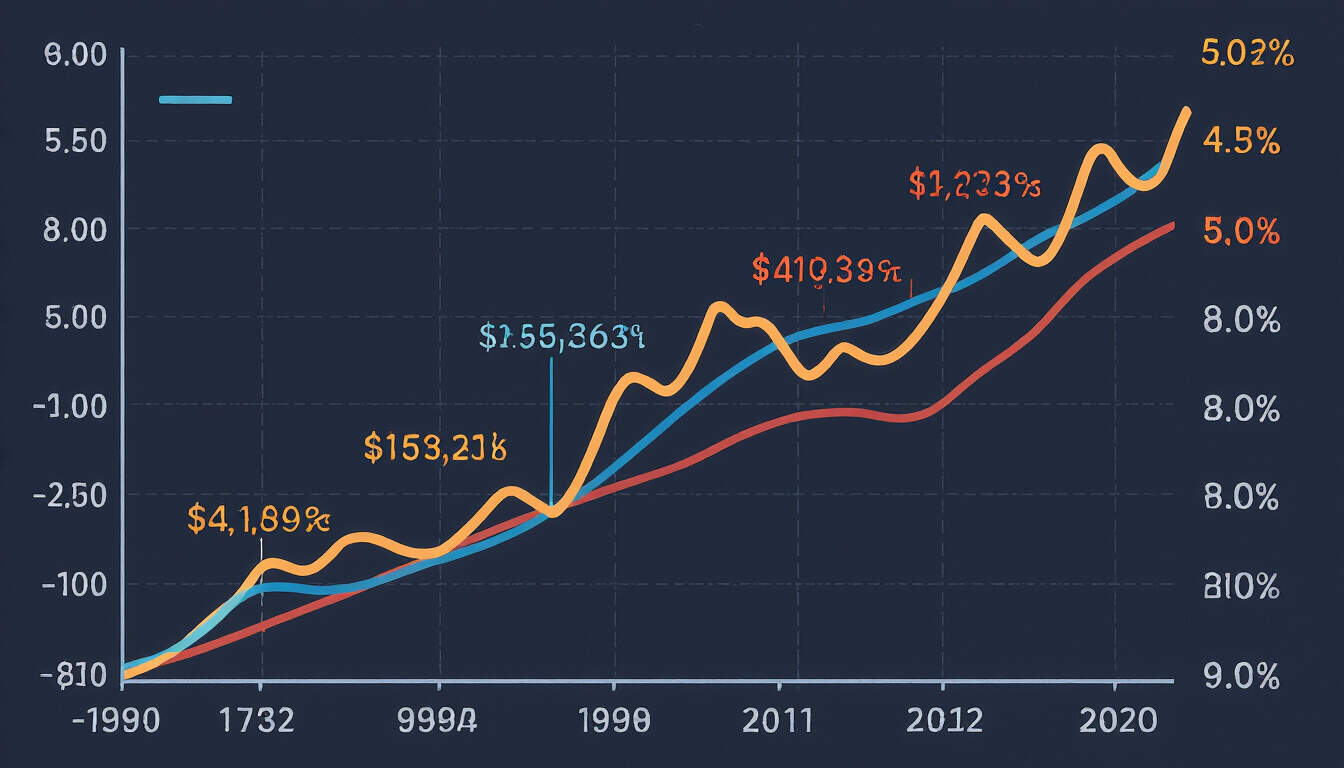Bond Convexity and Its Implications for Compounded Leverage
 by Lilian Nienow
by Lilian Nienow
Bond convexity measures the curvature in price-yield relationships, offering insights into risk and return dynamics. For professionals, it enhances decision-making in leveraged strategies, potentially amplifying gains while managing volatility.

Bond convexity is a key measure in fixed-income investments that captures the non-linear relationship between bond prices and interest rates. This concept helps professionals assess how price changes accelerate as rates fluctuate.
In fixed-income markets, convexity provides a more accurate picture of price sensitivity than duration alone. It quantifies the curvature, showing that for a given change in yields, prices of bonds with positive convexity rise more when rates fall than they decline when rates rise. This asymmetry can be crucial for strategies involving borrowed funds.
Professionals often integrate convexity into compounded leverage approaches, where returns are reinvested to build upon initial gains. For instance, in a portfolio using margin, understanding convexity allows for better timing of entries and exits. By focusing on bonds with high convexity, investors can potentially achieve greater compounded growth during rate declines.
Consider a scenario where an investor holds a portfolio of corporate bonds. If interest rates decrease, the price increase due to convexity can exceed expectations based on duration. This effect, when combined with leverage, magnifies overall returns. However, the reverse holds true: in rising rate environments, losses can be steeper, emphasizing the need for careful risk assessment.
Key Aspects of Convexity in Practice
To apply convexity effectively, financial analysts break it down into measurable components. First, effective convexity adjusts for embedded options, such as in callable bonds, where the measure might differ from modified convexity. This distinction is vital in leveraged setups, as options can alter the payoff profile.
Lists of factors influencing convexity include:
- The coupon rate: Higher coupons generally lead to lower convexity.
- Time to maturity: Longer maturities often result in higher convexity.
- Yield levels: Convexity tends to increase at lower yields.
These elements interact in compounded leverage systems, where repeated borrowing and reinvestment occur. For example, an analyst might use convexity to select bonds that optimize a leveraged portfolio's performance over multiple periods.
In analytical terms, convexity is calculated as the second derivative of the bond's price with respect to yield. The formula involves summing discounted cash flows and their sensitivities. While the math is straightforward, its application in real-world scenarios requires judgment. Professionals use this to forecast portfolio behavior under various rate scenarios, particularly in environments where leverage compounds effects over time.
Risks and Mitigation Strategies
One major risk in leveraging bonds is the potential for amplified losses due to negative convexity. This occurs in certain mortgage-backed securities, where prepayment risks can cause prices to behave unexpectedly. In such cases, as rates fall, borrowers refinance, reducing the bond's duration and convexity, which can erode expected gains.
To mitigate this, experienced investors employ diversification across bond types. By balancing high-convexity assets with those offering stability, portfolios can withstand adverse movements. Additionally, stress testing with historical data helps in simulating compounded leverage outcomes, ensuring that strategies remain viable.
For financial analysts, incorporating convexity into models improves accuracy in performance projections. This involves adjusting for volatility and correlation factors, which are essential in multi-asset strategies. Over time, this disciplined approach can lead to more consistent compounded returns.
Integrating with Advanced Techniques
In broader investment frameworks, leverage systems rely on tools like convexity to enhance efficiency. For instance, pairs trading or arbitrage strategies might use convexity-adjusted valuations to identify mispricings. Here, the focus is on exploiting temporary discrepancies amplified by market movements.
Professional case studies often highlight how convexity has played a role in successful leveraged plays. During periods of economic shifts, bonds with strong convexity have provided a buffer, allowing investors to compound gains safely. This underscores the value of in-depth analysis in refining investment processes.
Ultimately, the interplay between convexity and leverage demands ongoing monitoring. As market conditions evolve, so do the implications for compounded systems. By prioritizing data-driven insights, professionals can navigate these dynamics with greater confidence, fostering long-term success in their pursuits.
